Abstract
Bacteriological analyses were performed on the effluent from a conventional water treatment pilot plant in which granular activated carbon (GAC) had been used as the final process to assess the impact of GAC on the microbial quality of the water produced. Samples were collected twice weekly for 160 days from the effluents of six GAC columns, each of which used one of four different empty-bed contact times (7.5, 15, 30, and 60 min). The samples were analyzed for heterotrophic plate counts and total coliforms. Effluent samples were also exposed to chloramines and free chlorine for 60 min (pH 8.2, 23 degrees C). Bacterial identifications were performed on the disinfected and nondisinfected effluents. Additional studies were conducted to assess the bacteriological activity associated with released GAC particles. The results indicated that heterotrophic plate counts in the effluents from all columns increased to 10(5) CFU/ml within 5 days and subsequently stabilized at 10(4) CFU/ml. The heterotrophic plate counts did not differ at different empty-bed contact times. Coliforms (identified as Enterobacter spp.) were recovered from the nondisinfected effluent on only two occasions. The disinfection results indicated that 1.5 mg of chloramines per liter inactivated approximately 50% more bacteria than did 1.0 mg of free chlorine per liter after 1 h of contact time. Chloramines and chlorine selected for the development of different bacterial species--Pseudomonas spp. and Flavobacterium spp., respectively.(ABSTRACT TRUNCATED AT 250 WORDS)
Full text
PDF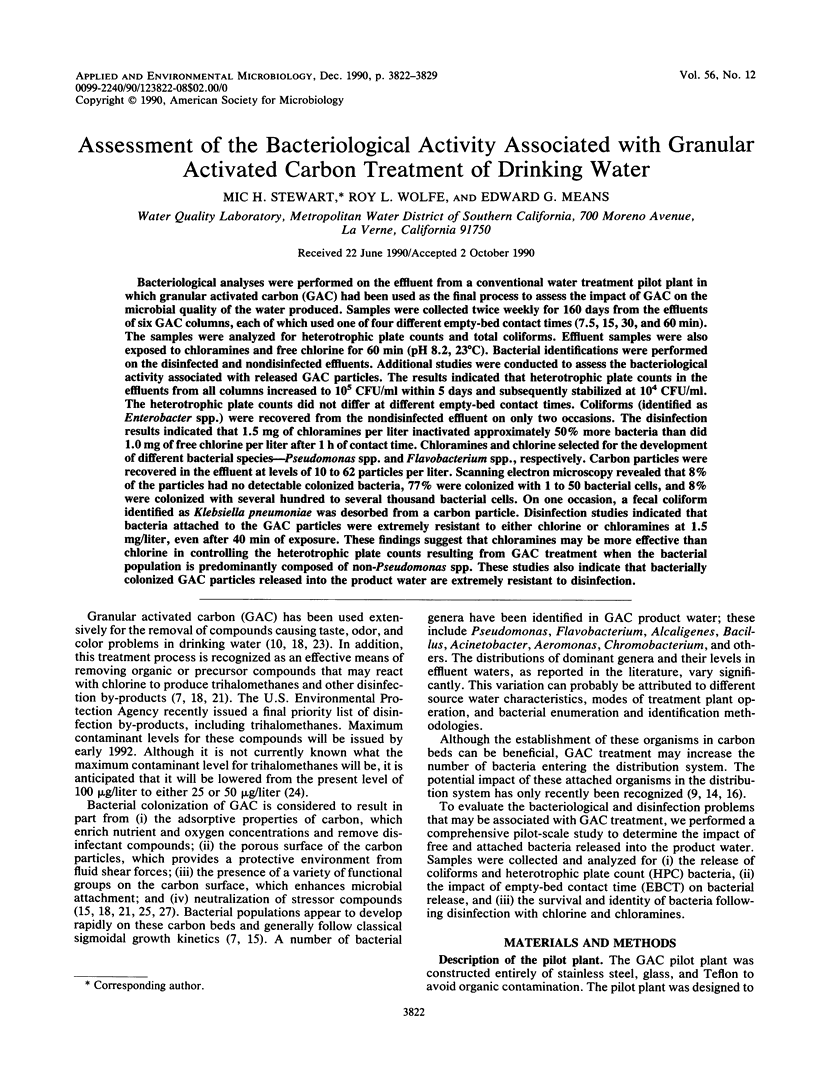
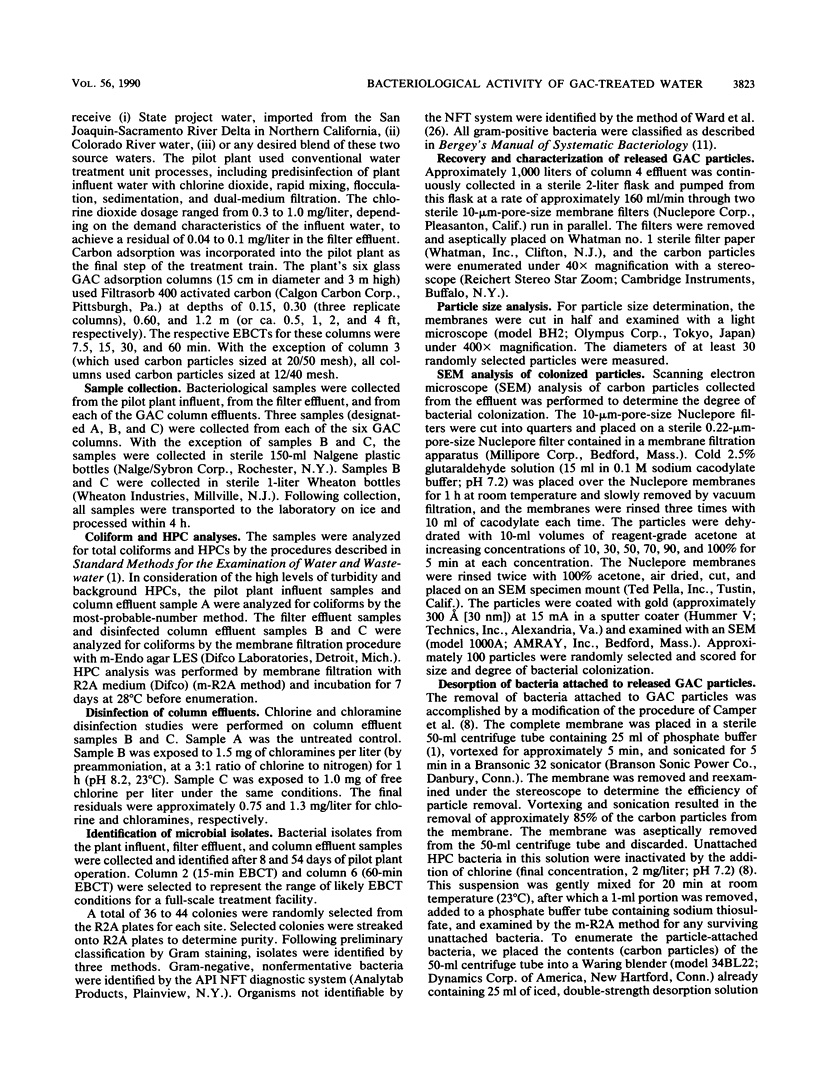
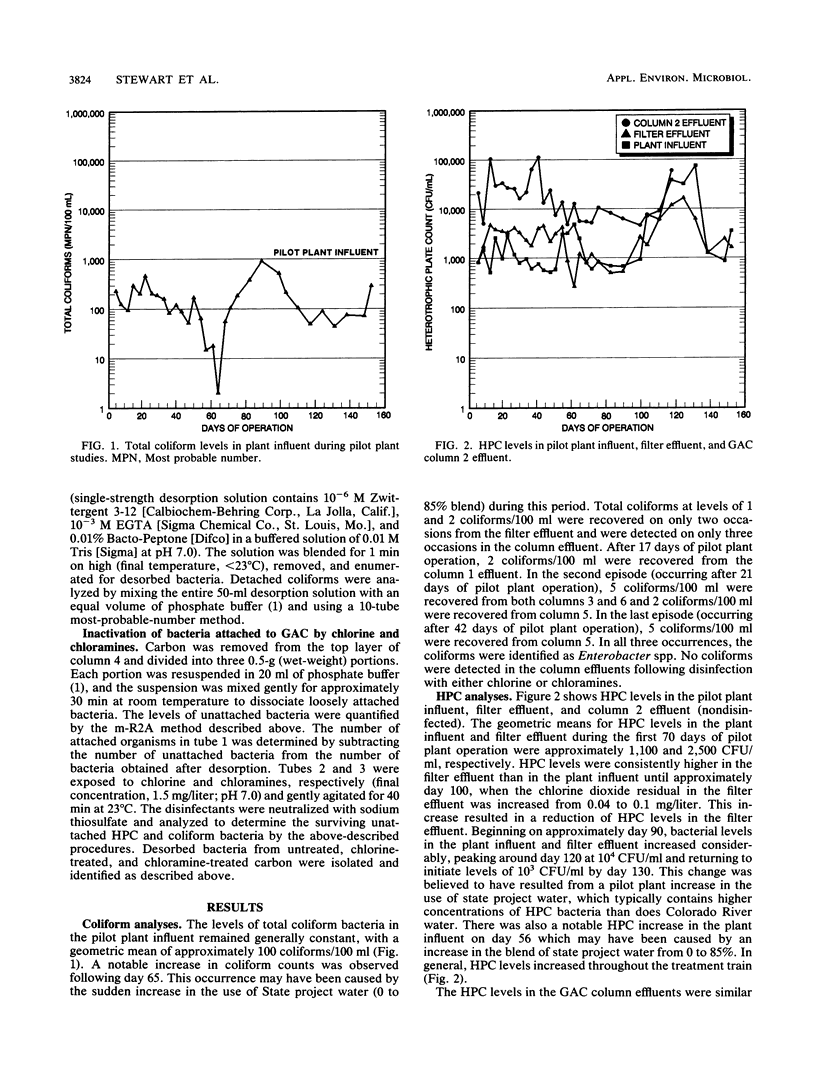
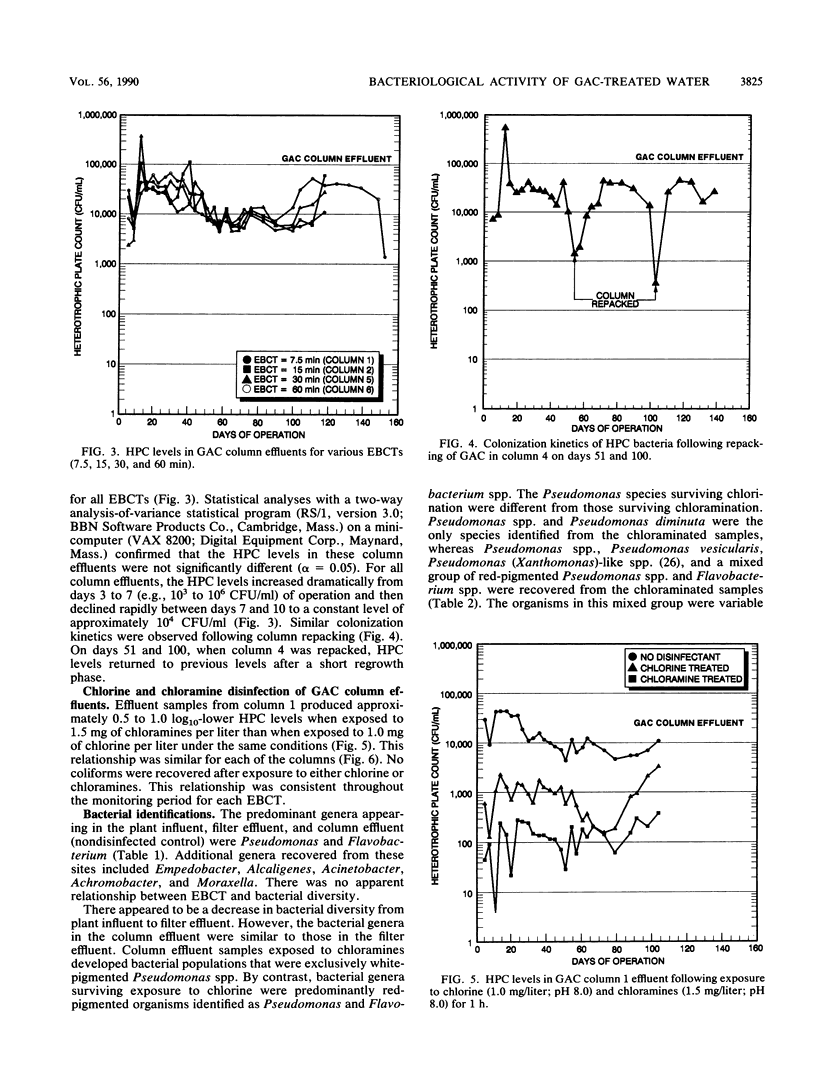
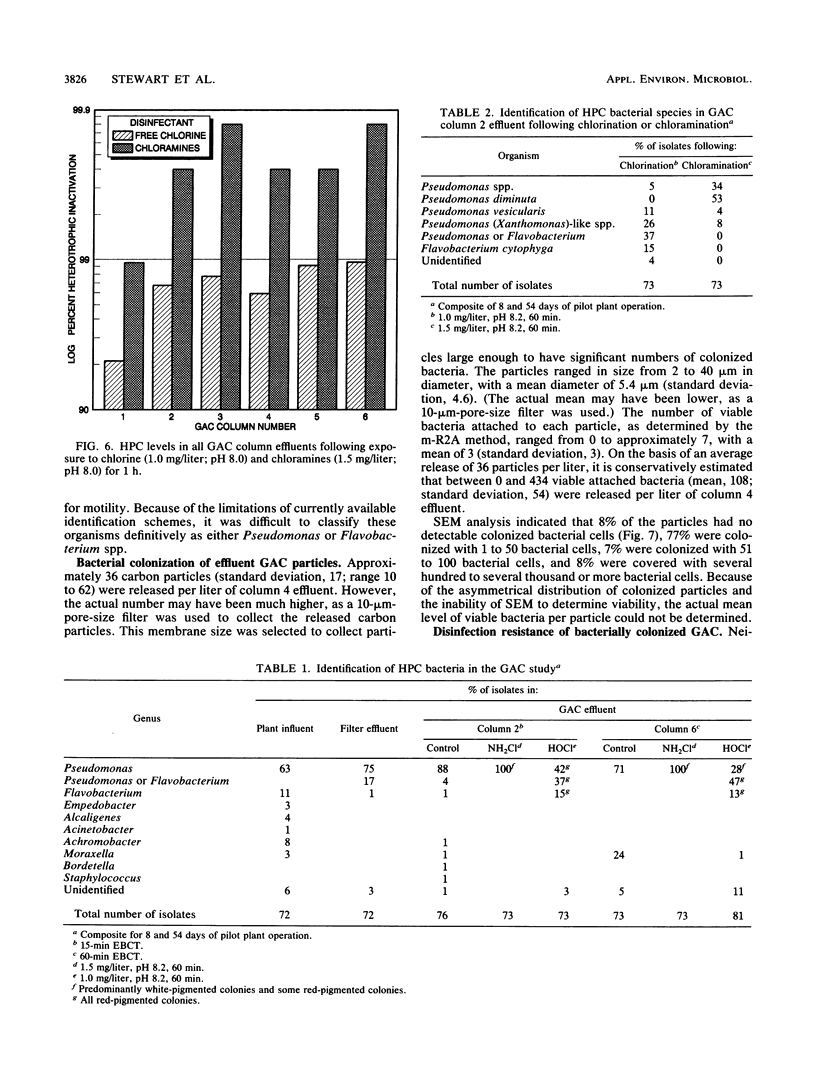
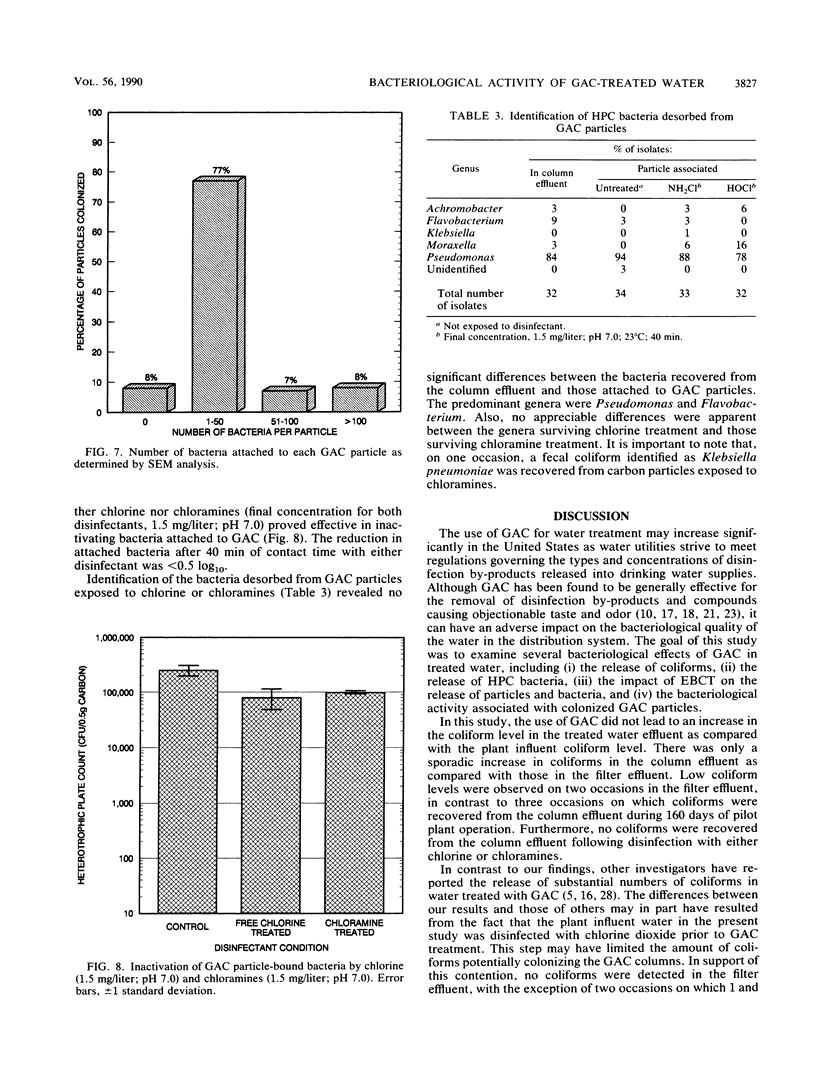
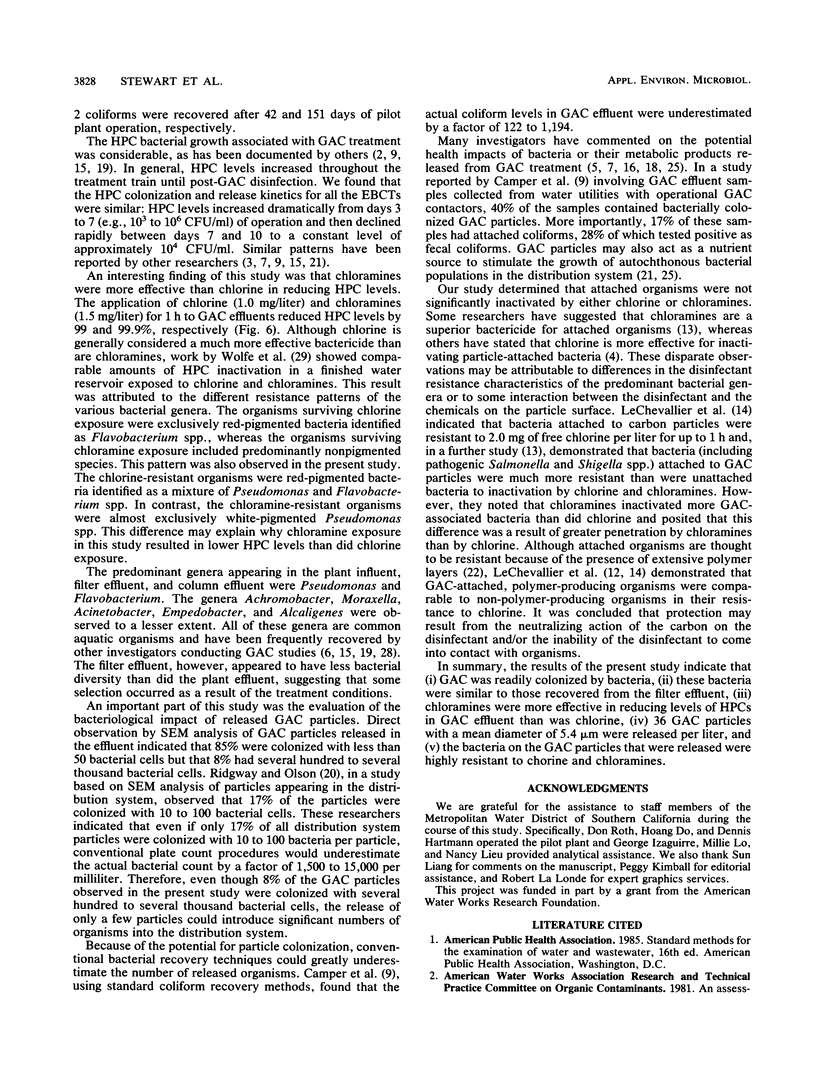
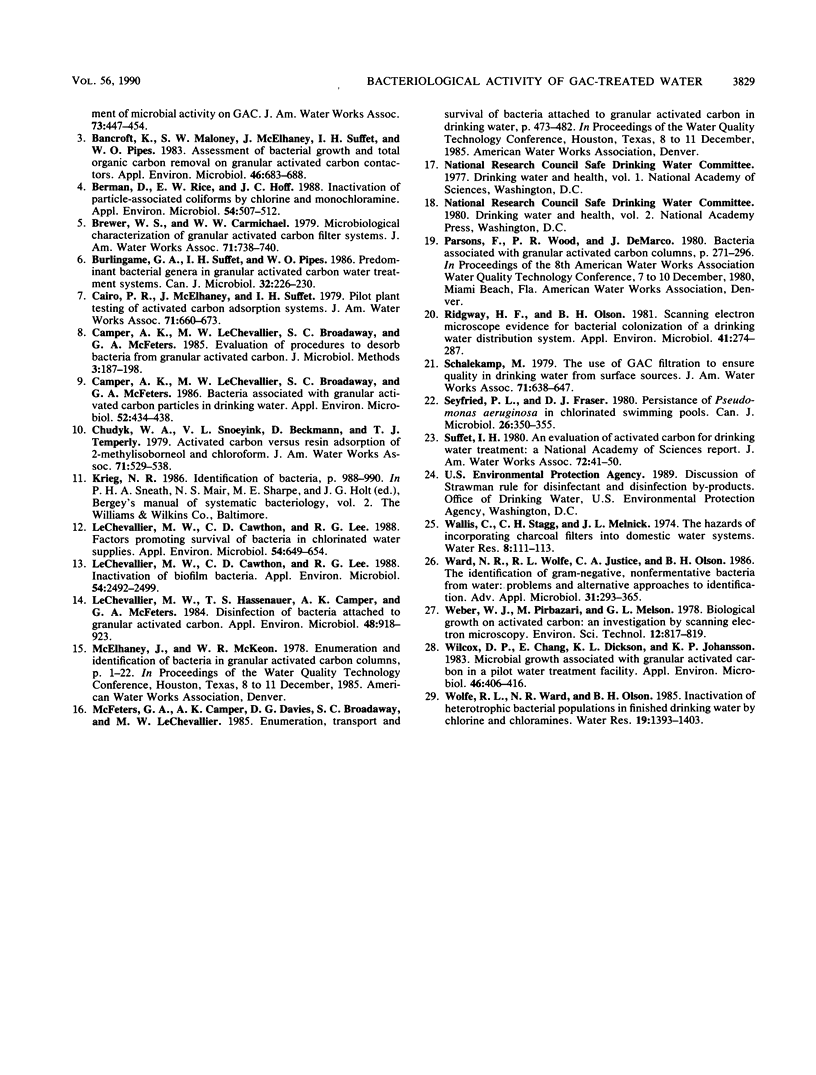
Selected References
These references are in PubMed. This may not be the complete list of references from this article.
- Bancroft K., Maloney S. W., McElhaney J., Suffet I. H., Pipes W. O. Assessment of bacterial growth and total organic carbon removal on granular activated carbon contactors. Appl Environ Microbiol. 1983 Sep;46(3):683–688. doi: 10.1128/aem.46.3.683-688.1983. [DOI] [PMC free article] [PubMed] [Google Scholar]
- Berman D., Rice E. W., Hoff J. C. Inactivation of particle-associated coliforms by chlorine and monochloramine. Appl Environ Microbiol. 1988 Feb;54(2):507–512. doi: 10.1128/aem.54.2.507-512.1988. [DOI] [PMC free article] [PubMed] [Google Scholar]
- Burlingame G. A., Suffet I. H., Pipes W. O. Predominant bacterial genera in granular activated carbon water treatment systems. Can J Microbiol. 1986 Mar;32(3):226–230. doi: 10.1139/m86-045. [DOI] [PubMed] [Google Scholar]
- Camper A. K., LeChevallier M. W., Broadaway S. C., McFeters G. A. Bacteria associated with granular activated carbon particles in drinking water. Appl Environ Microbiol. 1986 Sep;52(3):434–438. doi: 10.1128/aem.52.3.434-438.1986. [DOI] [PMC free article] [PubMed] [Google Scholar]
- LeChevallier M. W., Cawthon C. D., Lee R. G. Factors promoting survival of bacteria in chlorinated water supplies. Appl Environ Microbiol. 1988 Mar;54(3):649–654. doi: 10.1128/aem.54.3.649-654.1988. [DOI] [PMC free article] [PubMed] [Google Scholar]
- LeChevallier M. W., Cawthon C. D., Lee R. G. Inactivation of biofilm bacteria. Appl Environ Microbiol. 1988 Oct;54(10):2492–2499. doi: 10.1128/aem.54.10.2492-2499.1988. [DOI] [PMC free article] [PubMed] [Google Scholar]
- LeChevallier M. W., Hassenauer T. S., Camper A. K., McFeters G. A. Disinfection of bacteria attached to granular activated carbon. Appl Environ Microbiol. 1984 Nov;48(5):918–923. doi: 10.1128/aem.48.5.918-923.1984. [DOI] [PMC free article] [PubMed] [Google Scholar]
- Ridgway H. F., Olson B. H. Scanning electron microscope evidence for bacterial colonization of a drinking-water distribution system. Appl Environ Microbiol. 1981 Jan;41(1):274–287. doi: 10.1128/aem.41.1.274-287.1981. [DOI] [PMC free article] [PubMed] [Google Scholar]
- Seyfried P. L., Fraser D. J. Persistence of Pseudomonas aeruginosa in chlorinated swimming pools. Can J Microbiol. 1980 Mar;26(3):350–355. doi: 10.1139/m80-057. [DOI] [PubMed] [Google Scholar]
- Ward N. R., Wolfe R. L., Justice C. A., Olson B. H. The identification of gram-negative, nonfermentative bacteria from water: problems and alternative approaches to identification. Adv Appl Microbiol. 1986;31:293–365. doi: 10.1016/s0065-2164(08)70446-5. [DOI] [PubMed] [Google Scholar]
- Wilcox D. P., Chang E., Dickson K. L., Johansson K. R. Microbial growth associated with granular activated carbon in a pilot water treatment facility. Appl Environ Microbiol. 1983 Aug;46(2):406–416. doi: 10.1128/aem.46.2.406-416.1983. [DOI] [PMC free article] [PubMed] [Google Scholar]


